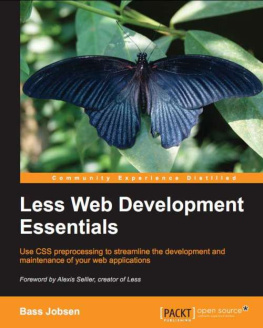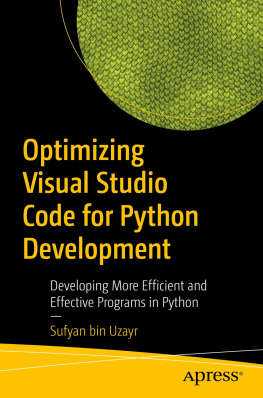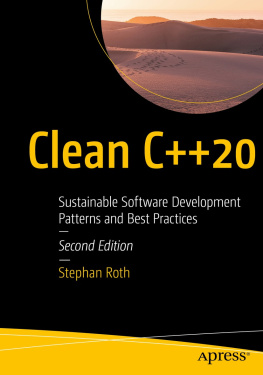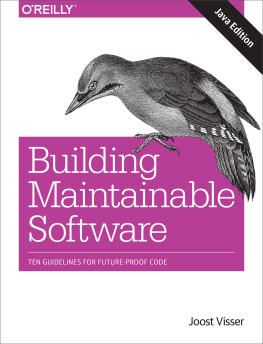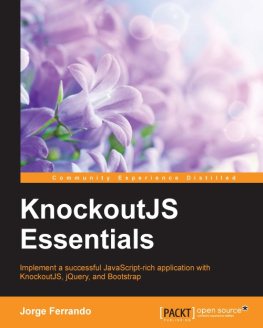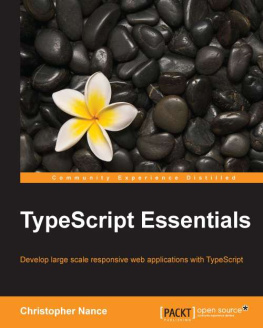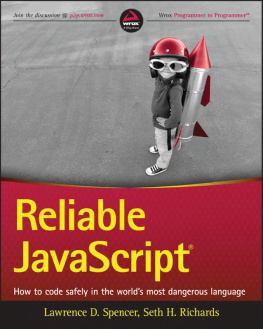Fattohi Faiz J. - Less web development essentials : use CSS preprocessing to streamline the development and maintenance of your web applications
Here you can read online Fattohi Faiz J. - Less web development essentials : use CSS preprocessing to streamline the development and maintenance of your web applications full text of the book (entire story) in english for free. Download pdf and epub, get meaning, cover and reviews about this ebook. year: 2014, publisher: Packt Publishing - ebooks Account, genre: Home and family. Description of the work, (preface) as well as reviews are available. Best literature library LitArk.com created for fans of good reading and offers a wide selection of genres:
Romance novel
Science fiction
Adventure
Detective
Science
History
Home and family
Prose
Art
Politics
Computer
Non-fiction
Religion
Business
Children
Humor
Choose a favorite category and find really read worthwhile books. Enjoy immersion in the world of imagination, feel the emotions of the characters or learn something new for yourself, make an fascinating discovery.
- Book:Less web development essentials : use CSS preprocessing to streamline the development and maintenance of your web applications
- Author:
- Publisher:Packt Publishing - ebooks Account
- Genre:
- Year:2014
- Rating:5 / 5
- Favourites:Add to favourites
- Your mark:
Less web development essentials : use CSS preprocessing to streamline the development and maintenance of your web applications: summary, description and annotation
We offer to read an annotation, description, summary or preface (depends on what the author of the book "Less web development essentials : use CSS preprocessing to streamline the development and maintenance of your web applications" wrote himself). If you haven't found the necessary information about the book — write in the comments, we will try to find it.
- Produce clear, concise, and well-constructed code that compiles into standard compliant CSS
- Explore the core attributes of Less and learn how to integrate them into your site
- Optimize Twitters Bootstrap to efficiently develop web apps and sites
If you use CSS3 in your web development tasks and want to create maintainable and reusable code with Less, this book is ideal for you. Although you need to have some experience in web development, even beginners will find this book useful.
What You Will Learn- Compile Less code into readable and maintainable CSS
- Integrate Less into your own projects
- Reuse your code to prevent code duplications
- Reduce the development and maintenance time of your projects
- Use variables and mixins to write reusable and portable code
- Build a responsive grid with Less to create beautifully responsive site layouts
- Customize Twitters Bootstrap 3 with Less
Less is a CSS preprocessor that essentially improves the functionality of simple CSS with the addition of several features. The book begins by teaching you how Less facilitates the process of web development. You will quickly then move on to actually creating your first layout using Less and compiling your very first Less code.
Next, you will learn about variables and mixins and how they will help in building robust CSS code. In addition, youll learn how to keep your code clean and test it by using style guides. We will then move on to the concept of Bootstrapping and the strength of using Less with Twitter Bootstrap. Going one step further, you will be able to customize Twitters Bootstrap 3 using Less.
Finally, you will learn how to integrate Less into your WordPress themes and explore other web apps that use Less. By leveraging this powerful CSS preprocessor, you will be able to consistently produce amazing web applications while making CSS code development an enjoyable experience.
Fattohi Faiz J.: author's other books
Who wrote Less web development essentials : use CSS preprocessing to streamline the development and maintenance of your web applications? Find out the surname, the name of the author of the book and a list of all author's works by series.

